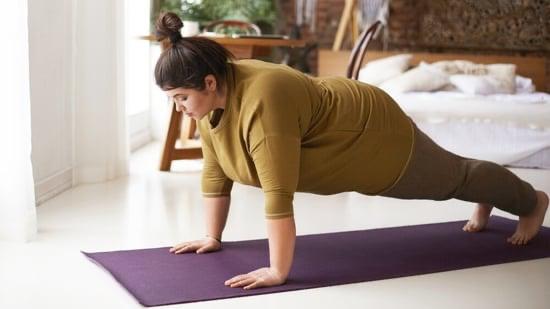 Image Source: Hindustan Times
Image Source: Hindustan Times
Yoga offers a holistic approach to health, combining mindful movement, breathing, and stretching to promote physical and mental well-being. Among its myriad benefits, targeted yoga poses can play a pivotal role in weight management and enhancing core strength — vital aspects for overall fitness and posture improvement. Below are five powerful yoga postures, from the dynamic Surya Namaskar to the focused Naukasana, known for sculpting the core and supporting sustainable weight loss.
Key Highlights: How Yoga Supports Weight and Core Goals
Unlike isolated exercises, yoga engages multiple muscle groups simultaneously, creating functional strength and flexibility.
Core muscles — including abdominals, obliques, lower back, and pelvic floor — act as the body’s central support system for balance and movement, and yoga strengthens all these layers.
Weight management through yoga arises from improved metabolism, enhanced mindfulness reducing overeating, and muscle toning that increases resting calorie burn.
Combining breath control (pranayama) with movement improves oxygenation and stress reduction, aiding fat loss and body composition.
Five Yoga Poses to Transform Core Strength and Support Weight Loss
Surya Namaskar (Sun Salutation)
A sequence of 12 linked asanas, Surya Namaskar is a dynamic flow that strengthens the entire body, including the core. This series elevates heart rate, promotes flexibility, and engages abdominal muscles in movements like Plank and Cobra poses. Practicing multiple rounds daily improves endurance and metabolic rate.
Naukasana (Boat Pose)
Naukasana directly targets the core muscles. Sit with legs extended, then lift legs and torso to form a “V” shape, balancing on the sitting bones. Hold the pose while engaging abdominals, which strengthens deep core muscles, reduces belly fat, and improves posture.
Phalakasana (Plank Pose)
A powerful isometric hold, the Plank requires maintaining a straight line from head to heels, engaging the abs, back, and arms. Regular practice tones the core and builds endurance, crucial for protecting the spine and enhancing overall stability.
Bhujangasana (Cobra Pose)
This gentle backbend strengthens the spine and engages lower back core muscles often neglected in ab-centric exercises. It combats sedentary posture effects and stimulates abdominal organs, supporting digestion and metabolic health.
Utkatasana (Chair Pose)
Chair Pose activates quads, glutes, and core muscles while demanding balance and breath control. Holding this squat-like posture engages the abdominal muscles dynamically and tones lower body muscles, increasing calorie expenditure and strengthening the core.
Practice Tips for Maximum Benefit
Maintain steady, deep breathing throughout poses to increase oxygen flow, reduce tension, and activate the parasympathetic nervous system for recovery.
Focus on proper alignment and gradual progression over rapid movement to avoid injury and build sustainable strength.
Incorporate yoga sessions 3–5 times per week combined with healthy nutrition and lifestyle changes for holistic weight management.
Listen to your body; modify poses based on flexibility and strength levels, using props if necessary.
Scientific Backing
Studies show that regular yoga improves core strength, balance, and flexibility, which reduces injury risk and enhances functional fitness.
Yoga’s mindful practice supports emotional regulation and decreases cortisol levels, hormonal factors implicated in weight gain.
Even once-weekly yoga can significantly improve core muscle activation and abdominal endurance.
Conclusion
Integrating yoga’s flowing sequences and targeted asanas like Surya Namaskar and Naukasana into your routine offers a dual advantage: managing weight effectively while building a strong, resilient core. This approach transcends mere physical exercise by nurturing mind-body coherence, supporting long-term health and well-being.
Sources: Peloton, Cleveland Clinic, Hindustan Times, OnePeloton Blog
Advertisement
STORIES YOU MAY LIKE
 Image Source: CNBC TV18
Image Source: CNBC TV18
 Image Source: BestMedialnfo.com
Image Source: BestMedialnfo.com
Advertisement





